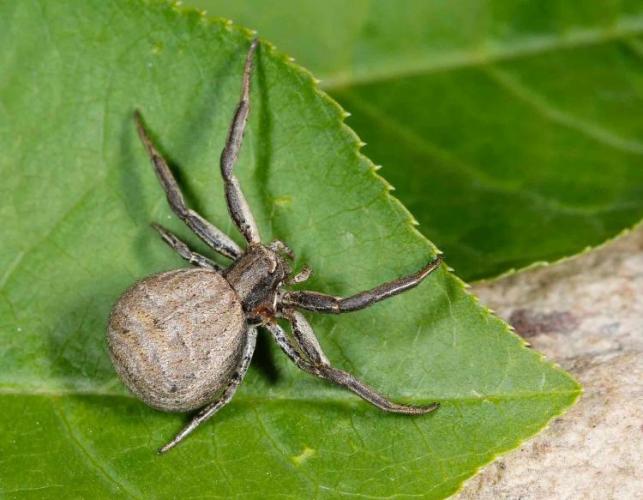Spiders use silk to catch prey and to anchor themselves against falling. But spiders also use their silk to fly. Spiders fly by a process called ballooning. It’s the young spiders that usually balloon, chiefly to disperse after hatching.
Ballooning is possible for a young spider because of its extra-light weight. To take flight, a spider must catch a breeze. Next, the spider faces into the wind and stands on the tips of its legs with its abdomen raised high in the air. The spider releases silk from the end of its abdomen, and the silk increases in length as the spider waits. When the strand of silk catches enough wind, the spider lets go of its hold and the wind carries it aloft. When large numbers of spiders balloon at the same time, their silk strands may become entangled and form a large mass. Large masses of silk were mistaken for chemical warfare during World War II, and for visitors from outer space by UFO watchers.
Spiders can drift long distances, but only the lucky ones land in favorable places. Those who survive the flight and landing usually begin to hunt immediately.
Ballooning spiders should not be mistaken for space aliens. They’re just tiny, windborne earthlings, seeking a little elbow room.
(Scott Maxey)
Watch Ballooning spiders in action in the video. Footage from Mike Blair Outdoors.
What a Tangled Web They Weave
The crab spider is one that uses ballooning to get around. Here’s more about this species.
- All crab spiders generally resemble crabs: Their legs extend outward from the sides, and they can walk in any direction.
- The first pair of legs are large and powerful, as in flower crab spiders, and are covered with many tiny spines.
- Crab spiders can be found under bark as well as on the forest floor under leaves, rocks, and on decaying logs. You can sometimes find them on low fence posts, flowering plants, and outbuildings.
- Woodland crab spiders are not easily seen because of their cryptic coloration but nevertheless are fairly common.
- Crab spiders capture prey by sitting and waiting for an insect or other spider to pass by. Then, they simply grab and bite it.
Learn more about the crab spider by visiting MDC’s Field Guide.


Recent Posts
























